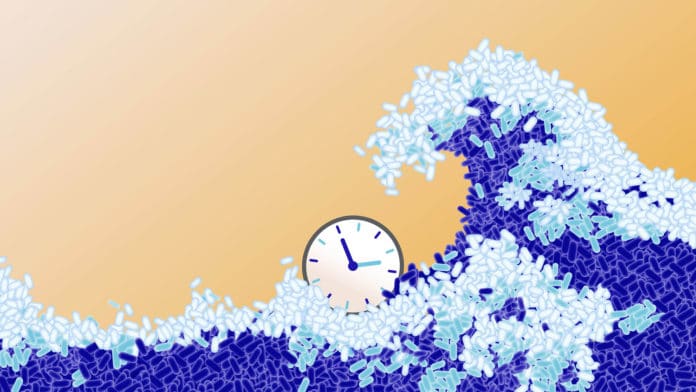A cluster of bacteria exhibits some exciting features. This cluster lives simultaneously in communities known as biofilms.
According to a past study, biofilms use sophisticated systems to interact. One another study suggests that these biofilms have a robust capacity for memory.
A new study by Stanford University and the Universitat Pompeu Fabra in Spain revealed a feature of biofilms unraveling; these communities are far more advanced than previously believed. Scientists discovered that the biofilm cells are arranged in an intricate pattern. This feature was previously only had been associated with higher-level organisms such as plants and animals.
University of California San Diego biologist Gürol Süel said, “We are seeing that biofilms are much more sophisticated than we thought. From a biological perspective, our results suggest that the concept of cell patterning during development is far more ancient than previously thought. The ability of cells to segment themselves in space and time did not just emerge with plants and vertebrates, but may go back over a billion years.”
Biofilm communities consist of different cell types. Previously, scientists were unaware that these cells could be organized in regulated complex patterns.
In this study, scientists developed experiments and a mathematical model that revealed the genetic basis for a “clock and wavefront” mechanism. The mechanism was previously observed in highly evolved organisms ranging from plants to fruit flies to humans.
As the biofilm expands and consumes nutrients, a “wave” of nutrient depletion moves across cells within the bacterial community. This freezes a molecular clock inside each cell at a specific time and position, creating an intricate composite pattern of distinct cell types repeating segments.
The breakthrough for scientists is to identify the genetic circuit underlying biofilm’s ability to generate community-wide concentric rings of gene expression patterns. Scientists then predicted that biofilms could inherently cause many segments.
Scientists noted, “Our discovery demonstrates that bacterial biofilms employ a developmental patterning mechanism hitherto believed to be exclusive to vertebrates and plant systems.”
The study could be proved helpful in developmental biology to investigate specific aspects of the clock and waveform mechanism in vertebrates.
Süel said, “We can see that bacterial communities are not just globs of cells. Having a bacterial system allows us to provide some answers that are difficult to obtain invertebrate and plant systems because bacteria offer more experimentally accessible systems that could provide new insights for the field of development.”
Journal Reference:
- Kwang-Tao Chou et al. A segmentation clock patterns cellular differentiation in a bacterial biofilm. DOI: 10.1016/j.cell.2021.12.001
